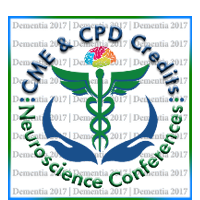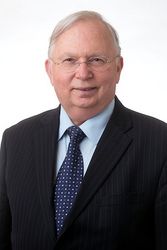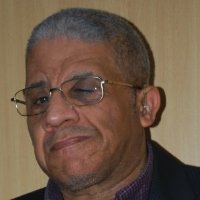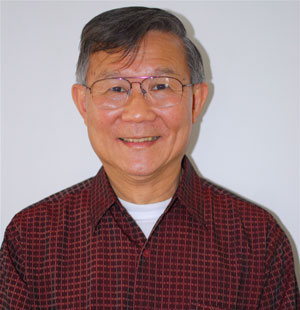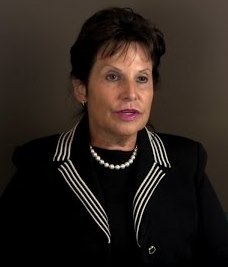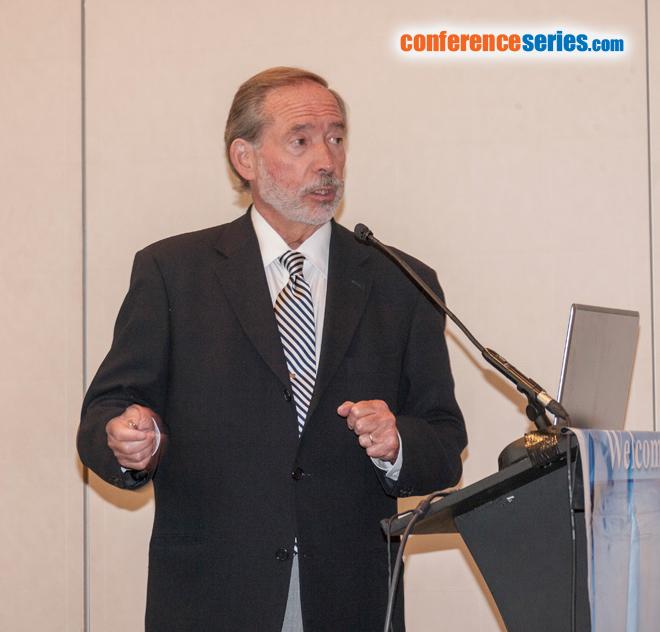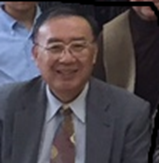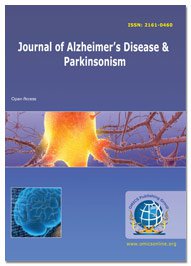Theme: An Insight into Advanced Research and Diagnostic Approaches in Alzheimer’s Disease and Dementia
Dementia 2017
On behalf of the Conference Organizing Committee, it is with great pleasure that we welcome you to the official website of 7th International Conference on Alzheimer’s disease and Dementia during October 16-18, 2017 at Rome, Italy.
Dementia 2017 has been planned and implemented in accordance with the accreditation requirements and policies of the Accreditation Committee
Dementia is a general term that describes a group of symptoms such as loss of memory, judgment, language, complex motor skills, and other intellectual function caused by the permanent damage or death of the brain's nerve cells, or neurons. Dementia, including Alzheimer’s disease, is one of the biggest global public health challenges facing our generation.
Track 1: Causes and Prevention of Alzheimer’s
Alzheimer's is caused by brain cell death. It is a neurological disorder in which the death of brain cells causes memory loss and cognitive decline. The total size of the brain shrinks in Alzheimer's, nerve cells and connections in the tissue progressively reduced, which cannot be seen or tested in the living brain affected by Alzheimer's disease, post-mortem/autopsy will always show tiny inclusions in the nerve tissues, called as plaques and tangles. Plaques are found between the dying cells in the brain - from the build-up of a protein called beta-amyloid (amyloid plaques). The tangles exist in the brain neurons, from a disintegration of second protein, called tau.
Worldwide, with Dementia or Related disorders nearly 44 million people have suffered in 2015,past results shown 35.66 million population lived with dementia worldwide in year 2010, with numbers expected to nearly double each twenty years, to 65.7 million in 2030 and 115.4 million in 2050. In 2010, fifty eight per cent of all population with dementia lived in countries with lower or moderate incomes, with this proportion anticipated to rise to 63% till 2030 and 71% by 2050. This condition is anticipated to double by 2030 and quite triple by 2050 to 115 million.
In this track we can discuss on Neurological changes in brain, Amyloid protein, Genetic associations and susceptibility genes, Role of Apo lipoprotein E, Brain trauma, Metabolic syndrome and Alzheimer’s disease, Protein misfolding, aggregation and toxicity, Disease-causing mutations, Epidemiology and prevalence, Histone modification, DNA methylation, Alzheimer’s disease prevention.
Related Dementia Conferences | Alzheimers conferences | Dementia Meetings | Neuroscience Conferences
6th World Congress on Neurology and Neurological disorders, September 28-30, 2016 Toronto, Canada; 2nd International Conference on Sleep Disorders and Medicine, November 28-30, 2016 Atlanta, USA, 2nd International Conference on Central Nervous System Disorders and Therapeutics, December 5-7 2016, Dubai, UAE; 2nd International Conference on Parkinson’s Disease and Movement Disorders November 28-30, 2016 Atlanta, USA; International Conference on Neurorehabilitation, July 21-22, 2016 Brisbane, Australia; 7thGlobal Neurologists Annual Meeting on Neurology and Neuro Surgery, August 22-24, 2016 Vienna, Austria; 1st Middle Eastern Conference for Stereotactic and Functional Neurosurgery 2016, Dubai; International Conference on Deep Brain Stimulation (DBS), Germany. 6th Annual Traumatic Brain Injury Conference Washington, United States. 21st International Conference on Brain Tumor Research and Therapy, 17thInternational conference on pediatric neurooncology , Accelerated Cure Project for Multiple Sclerosis and Acid Maltase Deficiency Association, Acoustic Neuroma Association and ADA Disability and Business Technical Assistance Program, Aicardi Syndrome Foundation and Alliance for Aging Research, ALS Association and ALS Therapy Development Institute, Alternating Hemiplegia of Childhood Foundation and Alzheimer’s Drug Discovery Foundation.
Track 2: Managing Dementia
Dementia is the term used to describe the symptoms of a number of conditions that affecting the brain. The commonly seen condition is Alzheimer’s, and other includes Parkinson's disease. Symptoms seen at early stages are personality changes, withdrawal, memory loss, confusion and apathy. Early diagnosis helps with providing early treatment, support and planning. Medications might help with some symptoms of dementia, but no permanent cure.
Majority of people with dementia are above age 65, the condition is not normal for all older people. The occurrence of dementia gets high with age, but it’s not given that an older person will develop it. While only 1-in-4 people with Alzheimer’s disease or Dementia has been diagnosed. Few more things we need to know about vascular dementia, Dementia with lewy bodies, Fronto-temporal dementia, Rarer causes of dementia, Creutzfeldt-Jakob disease, HIV-related cognitive impairment, Mild cognitive impairment.
Related Dementia Conferences | Alzheimers conferences | Dementia Meetings | Neuroscience Conferences
2nd International Conference on Sleep Disorders and Medicine, November 28-30, 2016 Atlanta, USA, 2nd International Conference on Central Nervous System Disorders and Therapeutics, December 5-7 2016, Dubai, UAE; 6th World Congress on Neurology and Neurological disorders, September 28-30, 2016 Toronto, Canada; 2nd International Conference on Parkinson’s Disease and Movement Disorders November 28-30, 2016 Atlanta, USA; International Conference on Neurorehabilitation, July 21-22, 2016 Brisbane, Australia; 7th Global Neurologists Annual Meeting on Neurology and Neuro Surgery, August 22-24, 2016 Vienna, Austria; 1st Middle Eastern Conference for Stereotactic and Functional Neurosurgery 2016, Dubai; International Conference on Deep Brain Stimulation (DBS), Germany. 6th Annual Traumatic Brain Injury Conference Washington, United States. 21st International Conference on Brain Tumor Research and Therapy, 17th International conference on pediatric neurooncology , Accelerated Cure Project for Multiple Sclerosis and Acid Maltase Deficiency Association, Acoustic Neuroma Association and ADA Disability and Business Technical Assistance Program,Aicardi Syndrome Foundation and Alliance for Aging Research, ALS Association and ALS Therapy Development Institute, Alternating Hemiplegia of Childhood Foundation and Alzheimer’s Drug Discovery Foundation.
Track 3: Alzheimer’s disease Diagnosis and Symptoms
Alzheimer’s disease is that the commonest type of dementia, it is a serious brain disorder and it impacts daily living through memory loss and cognitive changes. Although not all memory loss indicates Alzheimer’s disease, one in ten people over 65 years of age, and over half of those over 85 have Alzheimer’s disease. Currently, 26 million people worldwide have this dementia, and over 15 million Americans will be affected by the year 2050.
There is no single test that can show whether a person has Alzheimer's. While physicians can almost always determine if a person has dementia, it may be difficult to determine the exact cause. Diagnosing Alzheimer'srequires careful medical evaluation, including medical history, mental status testing, physical and neurological exam, blood tests and brain imaging.
Symptoms of Alzheimer’s disease usually develop slowly and gradually worsen over time, progressing from mild forgetfulness to widespread brain impairment. Chemical and structural changes in the brain slowly destroy the ability to create, remember, learn, reason, and relate to others. As critical cells die, drastic personality loss occurs and body systems fail.
This session includes Biomarkers, Novel approaches in biomarkers, Living with Alzheimer’s disease, Patients psychological changes, Neuropathology and Neuropsychology, Early detection possibilities, Different diagnosis procedures, New methods in diagnosis, Normal brain aging.
Related Dementia Conferences | Alzheimers conferences | Dementia Meetings | Neuroscience Conferences
International Conference on Neurorehabilitation, July 21-22, 2016 Brisbane, Australia; 7th Global Neurologists Annual Meeting on Neurology and Neuro Surgery, August 22-24, 2016 Vienna, Austria; 2nd InternationalConference on Parkinson’s Disease and Movement Disorders November 28-30, 2016 Atlanta, USA; 6th WorldCongress on Neurology and Neurological disorders, September 28-30, 2016 Toronto, Canada; 2nd InternationalConference on Sleep Disorders and Medicine, November 28-30, 2016 Atlanta, USA, 1st Middle Eastern Conference for Stereotactic and Functional Neurosurgery 2016, Dubai; International Conference on Deep Brain Stimulation (DBS), Germany. 2nd International Conference on Central Nervous System Disorders and Therapeutics, December 5-7 2016, Dubai, UAE; 6th Annual Traumatic Brain Injury ConferenceWashington, United States. 21st International Conference on Brain Tumor Research and Therapy, 17thInternational conference on pediatric neurooncology , Accelerated Cure Project for Multiple Sclerosis and Acid Maltase Deficiency Association, Acoustic Neuroma Association and ADA Disability and Business Technical Assistance Program, Aicardi Syndrome Foundation and Alliance for Aging Research, ALS Association and ALS Therapy Development Institute, Alternating Hemiplegia of Childhood Foundation and Alzheimer’s Drug Discovery Foundation.
Track 4: Alzheimer’s disease Imaging
Scientists look at the brain’s grey matter when investigating about Alzheimer’s disease. A fresh study, found that degenerating white matter in the brain could be an early indicator of disease. A study was published in Radiology which concludes that white matter plays an important role in how the disease strikes and progresses. Abnormal deposits of proteins that form amyloid plaques and tau tangles all over the brain in Alzheimer’s disease. It can also be characterized by shrinkage of brain tissues due to neurons loss.
This session includes Amyloid and Tau imaging, Imaging animal models, Imaging and genetics, New methods in imaging, Structural and functional MRI, Positron emission tomography, MR spectroscopy, EEG and brain mapping, SPECT imaging, Imaging correlates of clinical, cognitive and biomarker variables.
Related Dementia Conferences | Alzheimers conferences | Dementia Meetings | Neuroscience Conferences
10th World Congress on Neurology and Therapeutics, March 27-29, 2017 Madrid, Spain; 2nd InternationalConference on Brain Disorders and Therapeutics October 27-29, 2016 Chicago, USA; 6th World Congress on Neurology and Neurological disorders, September 28-30, 2016 Toronto, Canada; 7th Global Neurologists Annual Meeting on Neurology and Neuro Surgery, August 22-24, 2016 Vienna, Austria; 8th European Neurology Congress, September 21-23, 2016, Amsterdam, Netherlands; 31st International Epilepsy congress, Istanbul; Mechanisms of Epilepsy and Neuronal Synchronization, Spain; 2nd International Workshop on High Frequency Oscillations in Epilepsy Germany; 12th European Congress on Epileptology, Czech Republic; Traumatic Brain Injury: Clinical, Pathological and Translational Mechanisms, USA. Angelman Syndrome Foundation and Angioma Alliance, Antiepileptic Drug Pregnancy Registry and Aphasia Hope Foundation, Brain Aneurysm Foundation and Brain Injury Association of America, Inc., Brain Injury Resource Center and Brain Trauma Foundation, Cerebral Palsy Foundation and CHADD - Children and Adults with Attention-Deficit/Hyperactivity Disorder.
Track 5: Alzheimer’s disease Pathophysiology and Disease Mechanisms
Alzheimer’s disease is a progressive dementia with loss of neurons and the presence of two main microscopic neuropathological hallmarks: extracellular amyloid plaques and intracellular neurofibrillary tangles. Early onset AD, a rare familial form, is caused due to mutation of one out of three genes: (amyloid precursor protein), (presenilin 2) or (presenilin 1). Sporadic form occurs usually after age of 65 and accounts for most cases; it most likely results from a combination of genetic and influence of environment. Confirmed risk factors for sporadic AD are age and the presence of the E4 allele of (Apo lipoprotein E). Amyloid plaques comprise mainly of the neurotoxic peptide amyloid (Aβ, Abeta), cleaved sequentially from a larger precursor protein (APP) by two enzymes: β-secretase (also called BACE1) and γ-secretase (comprising four proteins, presenilin is one of them). If APP is first cleaved by the enzyme α-secretase rather than β-secretase then Aβ is not formed. Neurofibrillary tangles comprise mainly of the protein tau which binds with microtubules, which facilitating the neuronal transport system. Tau uncoupling from microtubules and aggregation into tangles inhibits transport and results in disassembly of microtubule. Phosphorylation of tau might have an important role in this. Selective vulnerability of neuronal systems such as the cholinergic, serotonergic, and noradrenergic and glutamatergic systems form the basis of current rational pharmacological treatment.
This session includes Aging, Prions and Alzheimer’s disease, Cellular signaling and cell to cell transmission, Oxidative damage and mitochondrial dysfunction, Autoimmunity in Alzheimer’s, Blood-brain barrier and transport, Neurogenesis and stem cells and Cell death.
Related Dementia Conferences | Alzheimers conferences | Dementia Meetings | Neuroscience Conferences
7th Global Neurologists Annual Meeting on Neurology and Neuro Surgery, August 22-24, 2016 Vienna, Austria; 9th Global Neuroscience Conference November 07-09, 2016 Melbourne, Australia; 2nd International Conference on Sleep Disorders and Medicine, November 28- 30, 2016, Chicago, USA; 2nd International Conference on Parkinson’s Disease & Movement Disorders November 28-30, 2016 Atlanta, USA; International Conference on Bipolar Disorders, Schizophrenia & Mental Disorders, October 26-27, 2016 Chicago, USA; American Epilepsy Society Annual Meeting, USA; 53rd Annual Congress of the German League Against Epilepsy, Germany; 12th European Congress on Epileptology, Czech Republic; 18th Annual Meeting of Infantile Seizure Society, Japan; 13th Eilat Conference on New Antiepileptic Drugs (EILAT XIII), Spain. Charcot-Marie-Tooth Association and Charlie Foundation for Ketogenic Therapies, Children's Hemiplegia and Stroke Assocn and Children's Tumor Foundation, Christopher and Dana Reeve Foundation and Citizens United for Research in Epilepsy, Coma/Traumatic Brain Injury Recovery Association and Compassionate Friends, Dravet Syndrome Foundation and Dysautonomia Foundation
Track 6: Amyloid Protein in Alzheimer’s and Dementia
The amyloid plaques and neurofibrillary tangles formation are thought to contribute to the degradation of the neurons (nerve cells) in the brain and the subsequent symptoms of Alzheimer's disease.
Amyloid Plaques: One of the hallmarks of Alzheimer's disease is the accumulation of amyloid plaques between nerve cells (neurons) in brain. Amyloid generally indicates protein fragments that the body produces normally. Beta amyloid is a protein fragment from an amyloid precursor protein (APP). In a healthy brain, these protein fragments are broke down and get eliminated. In Alzheimer’s, the fragments gets accumulated to form hard &insoluble plaques.
Neurofibrillary Tangles: Neurofibrillary tangles are insoluble twisted fibers found inside the brain's cells, consisting primarily of a protein called tau, which forms structure called a microtubule. Transport of nutrients and other important substances from one part of the nerve cell to another done by help of microtubule. InAlzheimer's disease, the tau protein is abnormal and results in collapse of the microtubule structures.
This session includes Amyloid Protein and Alzheimer’s Disease, Amyloid beta metabolism in Alzheimer’s, Brain accumulation of toxic amyloid beta, Amyloid Plaques and Neurofibrillary Tangles, Amyloid Neuroimaging andbiomarkers, Amyloidosis and Neurodegeneration, The amyloid hypothesis and potential treatments, Amyloid beta deposition, cognition and brain volume.
Related Dementia Conferences | Alzheimers conferences | Dementia Meetings | Neuroscience Conferences
6th World Congress on Neurology and Neurological disorders, September 28-30, 2016 Toronto, Canada; 2nd International Conference on Central Nervous System Disorders and Therapeutics, December 5-7 2016, Dubai, UAE; 2nd International Conference on Parkinson’s Disease & Movement Disorders November 28-30, 2016 Atlanta, USA; International Conference on Neurorehabilitation, July 21-22, 2016 Brisbane, Australia; 7thGlobal Neurologists Annual Meeting on Neurology and Neuro Surgery, August 22-24, 2016 Vienna, Austria; 1st Middle Eastern Conference for Stereotactic and Functional Neurosurgery 2016, Dubai; InternationalConference on Deep Brain Stimulation (DBS), Germany; 13th Eilat Conference on New Antiepileptic Drugs (EILAT XIII), Spain; Global Symposium on Ketogenic Therapies, Canada; Brazilian Epilepsy Congress, Brazil. World Health Organization, Accelerated Cure Project for Multiple Sclerosis and Acid Maltase Deficiency Association, Alternating Hemiplegia of Childhood Foundation and Alzheimer’s Drug Discovery Foundation,American Association on Health and Disability and American Autoimmune Related Diseases Association,American RSD Hope Organization and American Sleep Apnea Association.
Track 7: Geriatrics Dementia and Cognitive Disorder
Geriatrics or geriatric medication may be a specialty that focuses on health care of older people. It aims to push health by preventing and treating diseases and disabilities in older adults. there's no set age at that patients is also underneath the care of a specialist or geriatric MD, a MD United Nations agency makes a specialty of the care of older people. Rather, this call is set by the individual patient’s needs, and therefore the availableness of a specialist. It’s vital to notice the distinction between gerontology, the care of aged people, and geriatrics, that is that the study of the aging method itself.
Cognitive disorders square measure a class of mental state disorders that primarily have an effect on learning, memory, perception, and drawback determination, and embody blackout, dementia, and delirium. Whereas anxiety disorders, mood disorders, and psychotic disorders can even have an effect on psychological feature and memory functions, the DSM-IV-TR doesn't contemplate these psychological feature disorders, because loss of cognitive function is not the primary (causal) symptom. Causes vary between the various sorts of disorders however most include damage to the memory parts of the brain. Treatments rely on however the disorder is caused. Medication and therapies square measure the foremost common treatments but, for a few sorts of disorders like amnesia, treatments will suppress the symptoms however there is presently no cure.
This session includes Neurodegenerative diseases, Geriatric emergency medicine, Geriatric diagnostics,Geriatric neurology, Geriatric oncology, Geriatric psychiatry or psychogeriatric, Geriatric pharmacotherapy, Alcohol addiction and mental health, Nutritional deficiency, Preventions: Mental activity and healthy lifestyle.
Related Dementia Conferences | Alzheimers conferences | Dementia Meetings | Neuroscience Conferences
International Conference on Autism September 15-16, 2016 Phoenix, Arizona, USA; 9th Global Neuroscience Conference November 07-09, 2016 Melbourne, Australia; 5th International Conference on Addiction Researchand Therapy October 06-08, 2016 Florida, USA; 5th International Conference on Alzheimer’s Disease &Dementia October 16-18, 2017 Rome, Italy; 2nd International Conference on Sleep Disorders and Medicine November 28-30, 2016 Atlanta, USA; British Pediatric Neurology Association Conference 2016, UK; American Professional Society of ADHD 2016, USA; Brazilian Epilepsy Congress, Brazil; 12th EuropeanCongress on Epileptology, Czech Republic; 18th Annual Meeting of Infantile Seizure Society, Japan. Brain Aneurysm Foundation and Brain Injury Association of America, Inc., Angelman Syndrome Foundation and Angioma Alliance, Antiepileptic Drug Pregnancy Registry and Aphasia Hope Foundation, Brain Injury Resource Center and Brain Trauma Foundation, Cerebral Palsy Foundation and CHADD - Children and Adults with Attention-Deficit/Hyperactivity Disorder.
Track 8: Care Practice and Awareness
Persons with dementia have multiple psychological feature deficits that include each memory impairment, that affects the flexibility to find out new info or recall information previously learned, and one or additional of the subsequent symptoms-aphasia, apraxia, agnosia, or executive dysfunction-such that the psychological feature deficits negatively have an effect on social or activity functioning with a big decline in previous talents. Additionally, persons with dementia typically suffer from comorbid conditions that additional complicate care and impede best outcomes. Therefore, developing caregiving methods people with dementia is urgent, given this increasing prevalence and therefore the associated burden that dementia places not only on the individuals, however on the caregivers, relations, and therefore the resources of the health care system. Conventional views bearing on geriatric nursing typically paint an image of the care as being slow paced certain and less demanding than acute care. However, care of the aged, and particularly those with dementia, is usually complicated, unpredictable, and unstable.
This session includes Education and training of medical professionals, Care and quality of life, Person centered care, Cognitive training, Support and training for informal and professional careers, Putting scientific knowledge into practice, Non-pharmacological Interventions, Functional foods, Art, music and life style.
Related Dementia Conferences | Alzheimers conferences | Dementia Meetings | Neuroscience Conferences
10th World Congress on Neurology and Therapeutics, March 27-29, 2017 Madrid, Spain; 2nd InternationalConference on Brain Disorders and Therapeutics, October 27-29, 2016 Chicago, USA; 5th InternationalConference on Alzheimer’s Disease & Dementia October 16-18, 2017 Rome, Italy; 2nd Annual Experts Meeting on Depression, Anxiety and Stress Management, November 7-8, 2016, Valencia, Spain; 4th International Conference on Vascular Dementia June 30 - July 02, 2016 Valencia, Spain; 2nd Dravet Syndrome Conference, USA; 14th Canadian Angelman Syndrome Society conference, Canada; 4thInternational Family and Professional Conference on Lennox-Gastaut Syndrome, USA; 2nd International Workshop on High Frequency Oscillations in Epilepsy, Germany; Mechanisms of Epilepsy and Neuronal Synchronization , Spain.Charcot-Marie-Tooth Association and Charlie Foundation for Ketogenic Therapies, Children's Hemiplegia and Stroke Assocn and Children's Tumor Foundation, Christopher and Dana Reeve Foundation and Citizens United for Research in Epilepsy, Coma/Traumatic Brain Injury Recovery Association and Compassionate Friends,Dravet Syndrome Foundation and Dysautonomia Foundation
Track 9: Therapeutic Targets and Mechanisms for Treatment
Alzheimer's disease is a progressive neurodegenerative disease that is characterized histopathologically by the presence of plaques, mainly composed of Abeta amyloid and the tangles, mainly composed of hyperphosphorylated tau. To date, there is no treatment that can reverse the disease, and all the current therapeutics is directed to cope with the symptoms of the disease. Here we describe the efforts dedicated to attack the plaques and, in more detail, the process of neurofibrillary degeneration, linked to the presence of the hyperphosphorylated microtubule associated protein tau. We have identified the different putative targets for therapeutics and the current knowledge on them.
Treatment for Alzheimer's disease is entering a new and exciting phase, with several new drugs beginningclinical trials. Many of these new therapies are based on our best current understanding of the pathogenesis of Alzheimer's disease, and are designed to try to either slow or halt the progression of the disease. There are several different theories underlying the current efforts, and these are briefly reviewed. Therapies directed against some aspect of beta-amyloid formation, against neurofibrillary tangle formation and against the inflammatory response are all considered, as are the problems associated with each area. It is as yet unclear which, if any, of these approaches will be successful, but the high level of activity in each of these three fields provides some hope that an effective treatment for Alzheimer's disease is on the horizon.
This session includes Abeta, truncated and pGlu-Abeta, Immunotherapy, Neurotransmitter-based targets, Anti-inflammatory targets, Nanotechnology, Anti-oxidants, Neurotrophic factors, Protein aggregation, Deep brain stimulation, Misfolding and chaperones, Gene therapy, Drug-delivery systems.
Related Dementia Conferences | Alzheimers conferences | Dementia Meetings | Neuroscience Conferences
2nd International Conference on Sleep Disorders and Medicine, November 28-30, 2016 Atlanta, USA, 2nd International Conference on Central Nervous System Disorders and Therapeutics, December 5-7 2016, Dubai, UAE; 6th World Congress on Neurology and Neurological disorders, September 28-30, 2016 Toronto, Canada; 2nd International Conference on Parkinson’s Disease and Movement Disorders November 28-30, 2016 Atlanta, USA; International Conference on Neurorehabilitation, July 21-22, 2016 Brisbane, Australia; 7th GlobalNeurologists Annual Meeting on Neurology and Neuro Surgery, August 22-24, 2016 Vienna, Austria; 1st Middle Eastern Conference for Stereotactic and Functional Neurosurgery 2016, Dubai; International Conference on Deep Brain Stimulation (DBS), Germany. 6th Annual Traumatic Brain Injury Conference Washington, United States. 21st International Conference on Brain Tumor Research and Therapy, 17th International conference on pediatric neurooncology , Accelerated Cure Project for Multiple Sclerosis and Acid Maltase Deficiency Association, Acoustic Neuroma Association and ADA Disability and Business Technical Assistance Program,Aicardi Syndrome Foundation and Alliance for Aging Research, ALS Association and ALS Therapy Development Institute, Alternating Hemiplegia of Childhood Foundation and Alzheimer’s Drug Discovery Foundation.
Track 10: Animal Models and Translational Medicine
Animal models for Alzheimer’s disease it is important to think about the human phenotype and what is being modeled in terms of the animal phenotype. The moderator, Bradley Hyman, professor of neurology at Harvard Medical School, said that animal models of Alzheimer’s disease, based on the genetics of the disease and the closely related frontotemporal dementia, replicate at least some of the pathology. Researchers have been successful at modeling very specific aspects of Alzheimer’s disease in the mouse (e.g., plaques, tangles). Although these are incomplete models of the human disease, they have been well received in the field as potentially relevant models for use in drug discovery.
Patients with Alzheimer’s disease will display both amyloidopathy and tauopathy; however, scientists often focus, in a reductionist way, on one or the other in an animal model. A participant added that even though the anatomy in the mouse is different than the human, mutant tau mice are relatively good models in that they recapitulate tau-dependent neurodegeneration. This has led a number of companies to focus on antibodies that block tau-dependent neurodegeneration in these mouse models.
This session includes Transgenic models, Pharmacological and lesion models, Natural and seminatural models, Primate models, Zebra fish models, Animal models of human cognitive aging, Development of new animal models, Genetics of translational models, Protein-protein interactions, Ethical issues with animal models.
Related Dementia Conferences | Alzheimers conferences | Dementia Meetings | Neuroscience Conferences
6th World Congress on Neurology and Neurological disorders, September 28-30, 2016 Toronto, Canada; 2nd International Conference on Sleep Disorders and Medicine, November 28-30, 2016 Atlanta, USA, 2nd International Conference on Central Nervous System Disorders and Therapeutics, December 5-7 2016, Dubai, UAE; 2nd International Conference on Parkinson’s Disease and Movement Disorders November 28-30, 2016 Atlanta, USA; International Conference on Neurorehabilitation, July 21-22, 2016 Brisbane, Australia; 7thGlobal Neurologists Annual Meeting on Neurology and Neuro Surgery, August 22-24, 2016 Vienna, Austria; 1st Middle Eastern Conference for Stereotactic and Functional Neurosurgery 2016, Dubai; InternationalConference on Deep Brain Stimulation (DBS), Germany. 6th Annual Traumatic Brain Injury ConferenceWashington, United States. 21st International Conference on Brain Tumor Research and Therapy, 17thInternational conference on pediatric neurooncology , Accelerated Cure Project for Multiple Sclerosis and Acid Maltase Deficiency Association, Acoustic Neuroma Association and ADA Disability and Business Technical Assistance Program, Aicardi Syndrome Foundation and Alliance for Aging Research, ALS Association and ALS Therapy Development Institute, Alternating Hemiplegia of Childhood Foundation and Alzheimer’s Drug Discovery Foundation.
ConferenceSeries Ltd invites all the participants from all over the world to attend ‘9th International Conference on Alzheimer’s Disease & Dementia’ during October 16-18, 2017 at Rome, Italy which includes prompt keynote presentations, Oral talks, Poster presentations and Exhibitions.
Dementia, including Alzheimer’s disease, is one of the biggest global public health challenges facing our generation. Worldwide, at least 44 million people are living with dementia this number is expected to double by 2030 and more than triple by 2050 to 115 million. Much of the increase will be in developing countries like Western Europe and North America. Already 62% of people with dementia live in developing countries. Today, over 35 million people worldwide currently live with the condition. This number is expected to double by 2030 and more than triple by 2050 to 115 million. No treatments available to slow or stop the brain damage caused by Alzheimer’s disease, several medications can temporarily help improve the symptoms of dementia for some people. In two decades, it is estimated that 1.4 million Canadians will have dementia, costing the economy almost $300 billion per year. Globally, dementia cost $600 billion a year.
Why to attend???
Dementia 2017 will provide an opportunity for all stakeholders working on Alzheimer’s disease and Dementia to talk about their work. Dementia 2017 will congregate renowned speakers, principal investigators, experts, neurologist’s and Dementia researchers from both academia and health care industry will join together to discuss their views and research. The conference will be comprised of sessions by world class experts in the field of neurology. In Dementia 2017, international symposiums, B2B meetings, international workshops will also be organized to discuss the specific topics in the field of Dementia and Neurology.
Target Audience:
- Neurologists and Directors
- Physicians
- Neuroscientists
- Specialists
- researchers
- Health care professionals
- Professors
- Industrial Experts
- Neurosurgeons
- Psychiatrist
- Nutritional Scientists
- Lecturers and Students from Academia in the study of Dementia
- Students from Academia in the research of Neurology
ConferenceSeries Ltd organizes conference series all around the world in 2017. Here we welcome you to the 9th International Conference on Alzheimer’s disease and Dementia September during October 16-18, 2017 at Rome, Italy.
Dementia 2017 mainly focusing on Alzheimer’s disease, Dementia, Neurological changes in brain, Alzheimer’s disease Imaging, Disease Mechanisms, Geriatrics and Cognitive Disorder, Pathophysiology, Brain trauma, Care practice and Awareness, Current Research in Dementia and Alzheimer’s Disease.
Importance & Scope:
Dementia is a general term that describes a group of symptoms-such as loss of memory, judgment, language, complex motor skills, and other intellectual function-caused by the permanent damage or death of the brain's nerve cells, or neurons.
Dementia, including Alzheimer’s disease, is one of the biggest global public health challenges facing our generation.
Globally, results of a recent meta-analysis suggest that 44 million people lived with dementia worldwide in 2010, with numbers expected to almost double every 20 years, to 65.7 million in 2030 and 115.4 million in 2050. In 2010, 58 percent of all people with dementia lived in countries with low or middle incomes, with this proportion anticipated to rise to 63 percent in 2030 and 71 percent in 2050.This number is expected to double by 2030 and more than triple by 2050 to 115 million.
In the United States alone, experts estimate that as many as five million people age 65 and older suffer from Alzheimer’s disease.
Why Rome, Italy?
Rome has a status of the global city. It is known as the “Eternal city” and also “Caput Mundi,” coming from Latin and meaning capital of the world. The population of the city of Rome is around 2.7 million. The entire metropolitan area of Rome has an estimated 3.7 million people. According to the United Nations World Tourism Organisation (UNWTO), Europe was the most frequently visited region in the world in 2015, accounting for over half (51.4 %) of all international tourist arrivals, equivalent to some 609 million persons. The wealth of European cultures, the variety of its landscapes and the quality of its tourist infrastructure are likely to be an attraction. The center of Rome is compact, and wandering the ruins on foot is a great way to see the city. Street life is vibrant and constant. The architectural design is consuming, and close proximity of ancient sights make for a comfortable and convenient walk. Rome is easily divided into two regions: the inner city, within the Aurealian Wall, built in the late third century to enclose the area around the Seven Hills; and the sprawling outer city, with its suburbs. The historical center is a small area, located almost entirely on the eastern bank of the Tiber River. Monuments of Rome’s past eminence are located mostly within the historical center and are a stark contrast to the modern districts.
Conference Highlights:
- Alzheimer’s disease and Dementia
- Vascular Dementia
- Traumatic brain injury
- Dementia with Lewy Bodies
- Causes and Prevention
- Managing Dementia
- Diagnosis and Symptoms
- Imaging Techniques
- Pathophysiology and Disease Mechanisms
- Geriatrics and Cognitive Disorder
- Amyloid Protein in Dementia
- Care Practice and Awareness
- Therapeutic Targets
- Alzheimer’s clinical trials and studies
- Animal Models and Translational Medicine
Why to attend???
Meet Your Target Scientists, Professors Achieved Eminence in Their Field of Study with members from around the world focused on learning about Dementia and Alzheimer’s, this is your single best opportunity to reach the largest assemblage of participants from all over the world. Conduct demonstrations, distribute information, meet with current and potential scientific discoveries, make a splash with a new product line, and receive name recognition at this 3-day event. World-renowned speakers, the most recent findings and the newest updates in Alzheimer’s disease and Dementia fields are hallmarks of this conference.
Be Part of it!
This conference focusing on all the major aspects in the fields of Dementia, Alzheimer’s as well as Aging.
It would be beneficial for all the students who ever willing to enter into corporate worlds targeting to the respective fields
This Meeting strategic astuteness is to be an event for bringing together Scientists, Physicians, International mix of leading Universities, Alzheimer’s and Dementia Institutions to transform the practices to control and cure these Diseases.
Alzheimer Association & Societies around the Globe
Alzheimer's Australia
Albanian Alzheimer Society
Association de Lucha contra el Mal de Alzheimer
Foundation Alzheimer Aruba (FAA)
Alzheimer's Australia
Alzheimer Austria
Alzheimer Support Group
Alzheimer Society of Bangladesh
Barbados Alzheimer's Association Inc.
Alzheimer’s and Dementia Association of The Cayman Islands
Ligue National Alzheimer Liga
Alzheimer's Family Support Group
Association Bolivian de Alzheimer y Otras Dementias
FEBRAZ - Federico Brasilia de Associaçãoes de Alzheimer
Corporation Alzheimer Chile
Alzheimer's disease Chinese
Alzheimer Association & Societies in Canada
Target Audience:
Neurologists and Directors, Physicians, Neuroscientists, Specialists, researchers, health care professionals, Professors, Lecturers and Students from Academia in the study of Dementia.
Products manufactured by the industries:
Three drugs are available to treat symptoms in people with Mild to moderate Alzheimer’s disease
Aricept™ produced by Pfizer Canada Inc.,
Exelon™ produced by Novartis Pharma Canada Inc.
Reminyl™ produced by Janssen Ortho Inc.
Two drugs for Moderate to advanced Alzheimer’s disease
Ebixa®
Aricept™
References:
http://www.alzheimers.org.uk/dementiauk
https://en.wikipedia.org/wiki/Alzheimer's_Research_UK
http://www.alzheimersresearchuk.org/
http://www.alz.org/uk/dementia-alzheimers-uk.asp
http://www.alzheimersresearchuk.org/about-dementia/facts-stats/
http://www.alz.org/research/funding/alzheimers_our_commitment.asp
https://www.ucl.ac.uk/dementia
http://www.city.ac.uk/courses/cpd/evidence-based-dementia-care
Conference Highlights
- Managing Dementia
- Diagnosis and Symptoms
- Imaging Techniques
- Pathophysiology and Disease Mechanisms
- Geriatrics and Cognitive Disorder
- Amyloid Protein in Dementia
- Care Practice and Awareness
- Therapeutic Targets
- Animal Models and Translational Medicine
- Vascular Dementia
- Alzheimers disease and Dementia
- Traumatic brain injury
- Dementia with Lewy Bodies
- Alzheimers clinical trials and studies
To share your views and research, please click here to register for the Conference.
To Collaborate Scientific Professionals around the World
| Conference Date | October 16-18, 2017 | ||
| Sponsors & Exhibitors |
|
||
| Speaker Opportunity Closed | |||
| Poster Opportunity Closed | Click Here to View | ||

